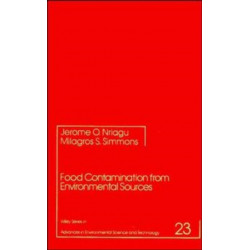Ingen varer
JO Nriagu Forfatter
Visning: Type : Alle | Sprog : Alle | Format : Alle
-
Bemærk: Kan ikke leveres før jul.
Arsenic in the Environment, Part 2: Human Health and Ecosystem Effects (Bog, Hardback, Engelsk)An element in the earth's crust, an additive in livestock feed. a medicine in early civilization--and the "toxin of toxins" A pervasive part of our natural environment and everyday lives. arsenic has nonetheless earned a niche in history as a substance of diabolical suppleness.
Levering: Skaffevare (forvent 14 - 30 hverdage) -
Bemærk: Kan ikke leveres før jul.
Arsenic in the Environment, 2 Part Set (Bog, Hardback, Engelsk)Levering: Skaffevare (forvent 14 - 30 hverdage) -
Bemærk: Kan ikke leveres før jul.
Cadmium in the Aquatic Environment (Bog, Hardback, Engelsk)This book presents a comprehensive account of current research on the chemistry and toxicology of cadmium in natural waters. It deals with the sources, distribution... Læs mere
Levering: Skaffevare (forvent 14 - 30 hverdage) -
Bemærk: Kan ikke leveres før jul.
Food Contamination from Environmental Sources (Bog, Hardback, Engelsk)Addressing the contamination of food from environmental sources, this study considers the persistence of some toxic substances in the human food chain, and the toxicological and health significance of observed contaminant levels.
Levering: Skaffevare (forvent 14 - 30 hverdage) -
Bemærk: Kan ikke leveres før jul.
Vanadium in the Environment, Part 2: Health Effects (Bog, Hardback, Engelsk)Vanadium, the 21st most abundant element in the earth's crust, is a shiny silvery soft metal mainly known for its corrosion resistance. This book examines the effects, both detrimental and beneficial, of vanadium on humans and wildlife.
Levering: Skaffevare (forvent 14 - 30 hverdage) -
Bemærk: Kan ikke leveres før jul.
Vanadium in the Environment, 2 Part Set (Bog, Hardback, Engelsk)This is a two-part volume addressing the effects of vanadium exposure to aquatic and terrestrial environments and examining the effects of vanadium on humans and... Læs mere
Levering: Skaffevare (forvent 14 - 30 hverdage)






